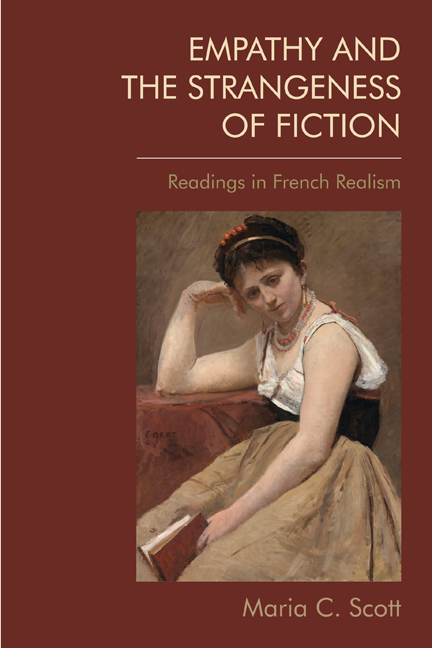Book contents
- Frontmatter
- Contents
- Dedication
- 1 Does Reading Fiction Boost Empathy? Psychological Approaches
- 2 Literary Approaches to Empathy
- 3 Fictional Strangers and the Strangeness of Fiction
- 4 Balzac: The Limits of Transparency and the Dangers of Opacity
- 5 Stendhal and the Two Opposing Demands
- 6 Sand and the Necessity of Suspicion
- 7 Towards an Empathetic Ethics of Fiction-Reading
- Bibliography
- Index
5 - Stendhal and the Two Opposing Demands
Published online by Cambridge University Press: 17 October 2020
- Frontmatter
- Contents
- Dedication
- 1 Does Reading Fiction Boost Empathy? Psychological Approaches
- 2 Literary Approaches to Empathy
- 3 Fictional Strangers and the Strangeness of Fiction
- 4 Balzac: The Limits of Transparency and the Dangers of Opacity
- 5 Stendhal and the Two Opposing Demands
- 6 Sand and the Necessity of Suspicion
- 7 Towards an Empathetic Ethics of Fiction-Reading
- Bibliography
- Index
Summary
Stendhal, who as well as being a novelist, literary critic and would-be playwright, wrote extensively about the visual arts and enthusiastically about music, placed emotional experience at the heart of the aesthetic encounter. On the one hand, he gave emotion a fundamental role in artistic creation. Stendhal described passion as ‘the possibility and the subject of the fine arts’. On the other hand, emotion played a key role in aesthetic reception for this author. In one of his autobiographical works, the author compares the novel to a bow designed to produce music by acting upon the soul of its reader. When one views the work of Michelangelo, he claims, ‘the soul is agitated by sensations that it is not used to receiving through the eyes’. Stendhal famously believed that some people were more open than others to the experience of being moved, whether by a novel, a piece of music, a play or a painting: these sensitive souls, he suggests in various places, are ‘the Happy Few’. He argues for example that ‘an eye that knows how to see and a soul that knows how to feel’ are necessary in order truly to see what Michelangelo achieved on the Sistine Chapel ceiling. To be under forty years old was a distinct advantage in this respect, but a passionate disposition was decisive: ‘A passionate man who submits to the effect of the fine arts finds everything in his heart.’
For Stendhal, encounters with works of art tended to take the form of a sharing of emotion, which he associated with the phenomenon of ‘sympathie’, defined by him as ‘the ability to identify with another person’. Even the success of works that do not primarily appeal to sympathy could depend upon this faculty, to the extent that attendance at a theatre or concert could produce a ‘nervous sympathy’ or ‘reciprocal sympathy’ felt with other people in the room. Novel-reading lacked this collective dimension, but could nevertheless itself be a rich source of sympathetic communication. For example, Stendhal included fictional characters, whether on the stage or on the page, among those to whom a reader's sympathy might be extended:
If the [stage] character appears in the slightest way to think about his style, mistrust emerges, sympathy flees, and pleasure in the drama disappears.
- Type
- Chapter
- Information
- Empathy and the Strangeness of FictionReadings in French Realism, pp. 106 - 144Publisher: Edinburgh University PressPrint publication year: 2020



